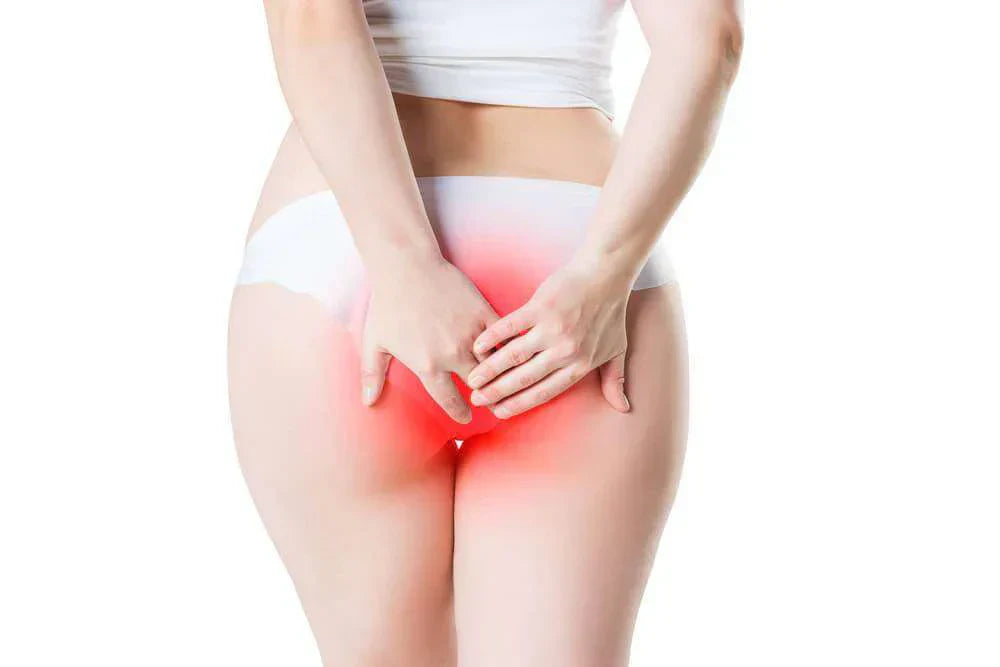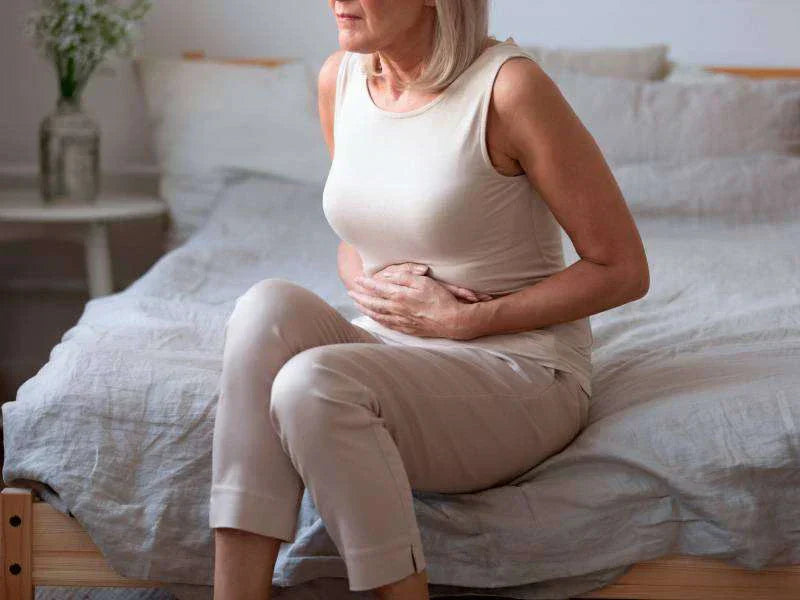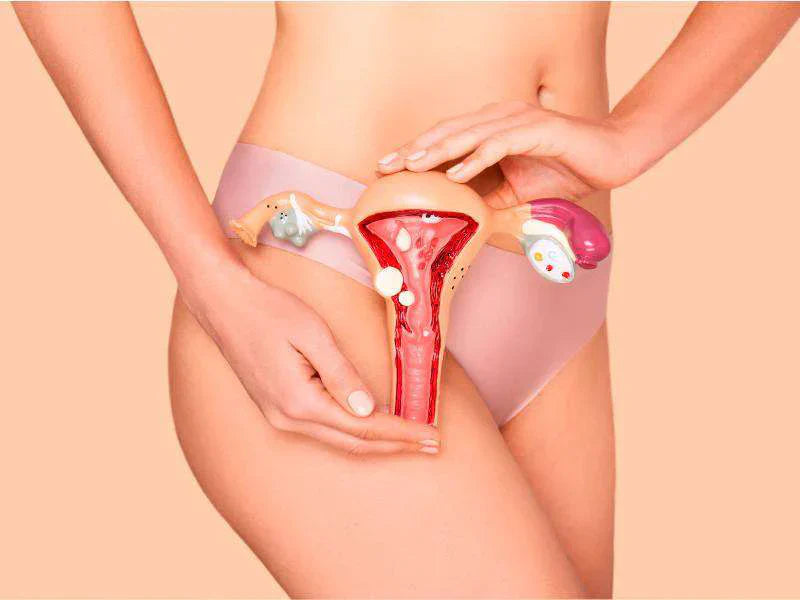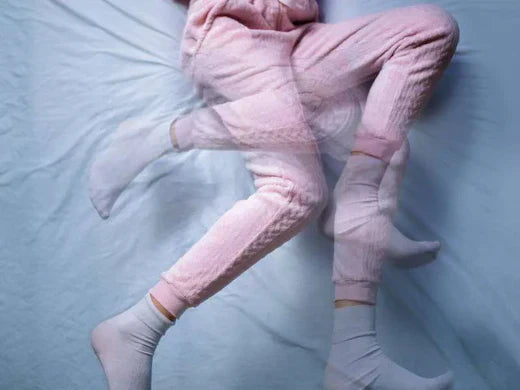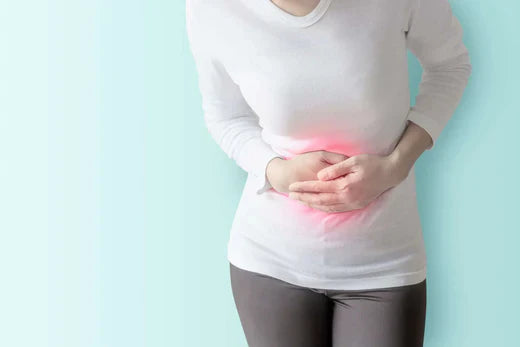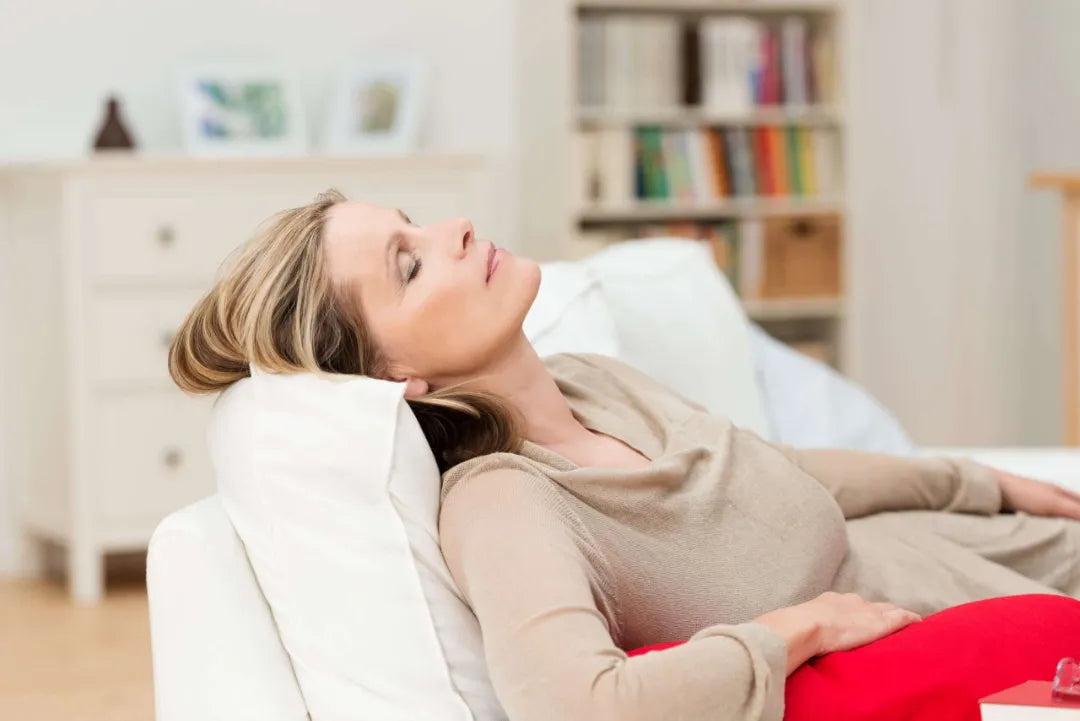What are hemorrhoids?
These are nothing more than a group of veins located in the rectum, and they are characterized by the following (1):
- Their size may vary. In addition, they may be visible in the anus or hidden inside the rectum.
- Mostly they are inflamed and have changes in color.
- They appear like a small sac that can grow over time.
- Depending on their location, they may show certain symptoms. For example, pain or bleeding.
Now let's discover a little more about the origin of the different types of hemorrhoids and their relationship with menopause.

Why do hemorrhoids appear?
Hemorrhoids have complex causes and these are not yet fully understood; even less so is how they relate to menopause. However, it is presumed that they may appear because of the following (2):
- The rectum (final portion of the gastrointestinal system) has certain cushioning that helps to support it and maintain its structure.
- With age, chronic constipation and other risk factors can reduce the size of this cushioning.
- This causes the rectum to drop and put more pressure on the veins.
- This in addition to changes in the blood circulatory system, such as those that occur in menopause (3), facilitates the appearance of hemorrhoids.
What are the types of hemorrhoids?
There are two types of hemorrhoids that have certain characteristics and associated symptoms. Following, is an explanation of each one:
Internal hemorrhoids
This is the name for hemorrhoids that are located in the initial portions of the rectum (the deepest part). (4). Common signs and symptoms that may occur include the following (4):
- A foreign body sensation in the rectum.
- Itching.
- Spontaneous bleeding or when going to the bathroom.
- Discomfort or pain when washing.
- Rectal prolapse.
Normally these are not associated with pain, but in a few cases it may be present (4).
External hemorrhoids
These hemorrhoids are the most noticeable and the ones that tend to come out of the anus the most. This is because they appear at the end of the rectum or in the anus itself (5). In addition to the above, they tend to differ somewhat from internal hemorrhoids by their signs and symptoms. Among these are (5):
- They cause bleeding.
- Also, they may cause changes in the color of the skin of the anus.
- They cause intense pain on touch that can make washing impossible.
- The pain worsens with bowel movements.
Risk factors for types of hemorrhoids
The appearance of hemorrhoids is associated with a variety of risk factors, such as (6,7):
- Constipation
- Diarrhea or disorders that cause this (such as colitis, stomach cramps and irritable bowel syndrome, which can occur during menopause).
- Obesity
- Aging.
- Diets low in fiber and water.
- Pregnancy.
- Being female.
- Sedentary lifestyle.
- Changes in the blood system (such as that which occurs during menopause and causes symptoms such as hot flashes) (3).
How are the types of hemorrhoids diagnosed?
External hemorrhoids typically only require a professional evaluation for diagnosis (5). In the case of internal ones, an anoscopy may be necessary for visualization (4).
Hemorrhoid treatment
Depending on the types of hemorrhoids or if there are complications, your doctor may suggest some of these treatments (8):
- Diets rich in fiber and water.
- The use of a variety of topical, decongestant, or pain-reducing medications.
- In some cases, surgery will be required.
Recommendations to reduce the risk of them appearing
Although it is not possible to completely prevent the appearance of hemorrhoids, the risk can be reduced by following some recommendations (1,9,10):
- Increase your intake of high-fiber foods like whole grains, fruits, and vegetables.
- Try to stay hydrated; i.e, drink a lot of water. In addition, try to reduce the consumption of alcohol and coffee.
- If you feel stomach pain or the need to go to the bathroom, don't delay. Keep in mind that in doing so, this can lead to hard, dry stools that are more difficult to pass.
- Avoid a sedentary lifestyle by keeping physically fit.
- Try to maintain an ideal weight.
- Go to the doctor for your regular check-ups, especially during menopause.
Now you know everything about the different types of hemorrhoids, their symptoms, treatments and ways they can be prevented, as well as why they appear and the relationship they have with the menopause. So now you know: you don't have to live with this discomfort so you can enjoy this new stage of your life.
Bibliographic references
- Hemorrhoids | piles
. MedlinePlus - U.S. National Library of Medicine. 2020. https://medlineplus.gov/hemorrhoids.html - Lohsiriwat V. Hemorrhoids: from basic pathophysiology to clinical management. World J Gastroenterol. 2012 May 7;18(17):2009-17. doi: 10.3748/wjg.v18.i17.2009. PMID: 22563187; PMCID: PMC3342598.
- Moreau KL, Hildreth KL. Vascular Aging across the Menopause Transition in Healthy Women. Adv Vasc Med. 2014 Jul 17;2014:204390. doi: 10.1155/2014/204390. PMID: 25984561; PMCID: PMC4433172.
- Fontem RF, Eyvazzadeh D. Internal Hemorrhoid. 2021 Ago 9. En: StatPearls
. Treasure Island (FL): StatPearls Publishing; 2022 Ene–. PMID: 30725867. https://www.ncbi.nlm.nih.gov/books/NBK537182/ - Lawrence A, McLaren ER. External Hemorrhoid. 2021 Ago 11. En: StatPearls
. Treasure Island (FL): StatPearls Publishing; 2022 Ene–. PMID: 29763185. https://www.ncbi.nlm.nih.gov/books/NBK500009/ - De Marco S, Tiso D. Lifestyle and Risk Factors in Hemorrhoidal Disease. Front Surg. 2021 Ago 18;8:729166. doi: 10.3389/fsurg.2021.729166. PMID: 34485376; PMCID: PMC8416428.
- Hong YS, Jung KU, Rampal S, Zhao D, Guallar E, Ryu S, Chang Y, Kim HO, Kim H, Chun HK, Sohn CI, Shin H, Cho J. Risk factors for hemorrhoidal disease among healthy young and middle-aged Korean adults. Sci Rep. 2022 Ene 7;12(1):129. doi: 10.1038/s41598-021-03838-z. PMID: 34996957; PMCID: PMC8741788.
- Mott T, Latimer K, Edwards C. Hemorrhoids: Diagnosis and Treatment Options. Am Fam Physician. 2018 Feb 1;97(3):172-179. PMID: 29431977. https://www.aafp.org/dam/brand/aafp/pubs/afp/issues/2018/0201/p172.pdf
- Haemorrhoids (piles) symptoms and treatments
. Illnesses & conditions | NHS inform. 2021. https://www.nhsinform.scot/illnesses-and-conditions/stomach-liver-and-gastrointestinal-tract/haemorrhoids-piles - Cleveland Clinic. 5 simple ways to prevent hemorrhoids
. Cleveland Clinic Health Essentials. Cleveland Clinic Health Essentials; 2022. https://health.clevelandclinic.org/5-simple-ways-you-can-prevent-hemorrhoids/
You May Also Like

JOIN US AND GET 10% OFF
Sign up to our newsletter to access free resources, advice and support.



